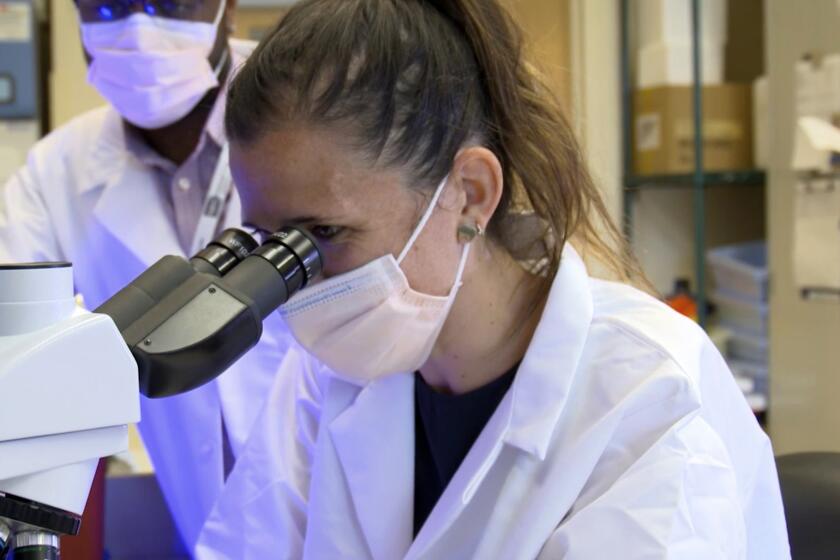Hairy part of organ reversal
- Share via
In 1998, two sisters with chronic ear, sinus and lung infections were examined at a North Carolina hospital. The sisters were twins, but not quite identical. They looked exactly the same on the outside, but inside, one twin’s organs were reversed, making the girls mirror images of each other.
As anyone who has pledged allegiance knows, the human heart lies slightly left of center. This internal asymmetry extends to other organs too. The liver and gallbladder are on the right side of the body, the stomach and spleen on the left. The left lung has two lobes, the right lung three.
But in rare cases, such as that of the North Carolina twin, the opposite is true: The heart lies slightly to the right, not left, and the rest of the internal organs are flipped too.
British physician Thomas Watson was one of the first to document such a reversal, more than 150 years ago. Watson was autopsying a patient, John Reid, who had died unexpectedly. Upon opening Reid’s chest, Watson found his heart was on the right, not left, and the rest of his organs were flipped. The odds of having a single organ out of place are slim: In about 1 in 29,000 people, for instance, the heart is on the right. But a complete reversal of all organs, situs inversus totalis, is more common: roughly 1 in 8,000.
Having one organ out of place can pose severe complications. The heart, for example, might not develop fully or connect to other organs, such as the lungs, properly; or it might simply be in the wrong place to do what it needs to do -- pump blood.
Situs inversus totalis, on the other hand, is often harmless; if all the organs are reversed, everything still has a chance at lining up. In fact, many people have gone to their graves not knowing their heart, stomach, spleen, liver and lungs were technically out of place.
After Watson’s report, scientists began wondering why such a complete flip would occur. Hints began cropping up in the early 1900s, when doctors started to notice that situs inversus often went hand in hand with sinus and respiratory problems.
That strange relationship began to make more sense in the late 1970s. Swedish researcher Bjorn Afzelius was studying infertility in men, many of whom had chronic sinus and lung infections, as well as reversed organs. The men’s sperm lacked working flagella, the whip-like tails that help sperm swim. When Afzelius examined the men’s respiratory cells, he noticed that their cilia, whip-like hairs that help usher germs and particles out of the lungs, weren’t working either.
So Afzelius took a bit of a leap. The proper movement of cilia, he surmised, must be crucial for telling organs where to go.
Twenty years later, experiments in mice showed that defective cilia resulted in mice with their organs reversed.
A Japanese researcher, Nobutaka Hirokawa, noticed that while cilia on all cells move back and forth, the cilia on a specific cluster of cells in the developing embryo move clockwise, and are set at a slight angle. Put something in their path, and they’ll sweep it over to the left.
These cilia, scientists now think, direct the chemical signals that tell an embryo where everything will ultimately go. Turn these little hairs around or disturb their function, and body parts end up out of place.
Which is what happened to one of the North Carolina twins. The two had a disease called PCD, or primary ciliary dyskinesia, in which faulty cilia cause constant respiratory infections. Half of PCD patients also have faulty cilia that cause their internal organs to stack up in reverse.



